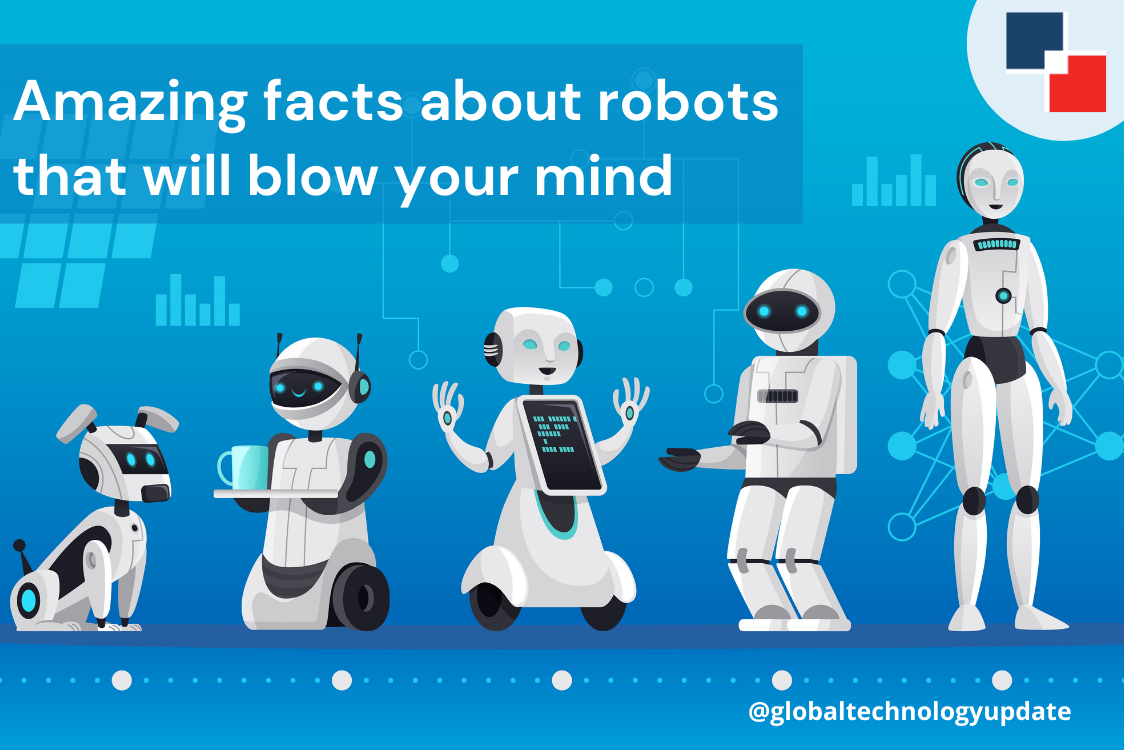Robots are becoming increasingly useful in our lives. They’re helping us clean our homes, cook meals, and even drive cars. But what is the impact of robots in everyday life? Will we eventually be able to create robots that think for themselves? In this article, we are discussing some amazing facts about robots.
“Robots” are referred to as “manipulators” because they are machines made to do the work for a human. Some of them can be called “walking” machines because they can be moved with a remote control or sensors.
In many ways, Robots are smarter than humans and can help us in many ways. Some of these robots can now clean our floors, cook food, keep an eye on security, deliver packages, and even talk to people.
There’s no doubt that robots are going to play an increasing role in our daily lives. There are more than 5 million industrial robots in use today. And by 2020, experts predict that there will be 1.5 billion robots worldwide.
Have you seen robots in movies? Of course, yes… Right? The new movie “Attack” has the idea that the Indian Army should use super-soldiers that are controlled by robots and other artificial means to save lives during the war.
Let’s explore some amazing facts about robots.
Most Amazing Facts About the Robots
-
First Robot: Flying Bird
The first robot was created in the form of a flying bird, which he produced in approximately 400 BC. Archytas was a well-known Greek scientist who contributed to the advancement of mathematics, philosophy, and astronomy. In addition, he designed a flying bird with a wooden body and a steam-powered engine.
-
Vacuum Robots – The First Effective Household Robots
The first successful household robot was a vacuum cleaner. This robot was a circular vacuum cleaner that operated automatically. Vacuum-cleaning robots are now more popular than any other type of domestic robot.
Modern vacuum robots can clean every area of the house without human help. They can re-energize themselves after washing the floor. These robots also include Wi-Fi connectivity, laser-guided navigation, and computer vision.
-
Humanoid Robots: A Scientific Miracle!
A Humanoid refers to a robot with a human-like body shape. The design may be functional, interacting with human tools and environments, experimental, or other.
Humanoid robots have a torso, head, two arms, and two legs, while others just duplicate part of the body, such as the waist up. Some humanoid robots also have heads with eyes and mouths that look like human ones.
-
UNIMATE – The First Industrial Robot
The Unimate was the first industrial robot, revolutionizing manufacturing around the world. Unimate was designed by Joseph Engelberger, the father of Robotics, and is based on a 1954 mechanical arm and its patent by American inventor George Devol.
This robot went from a two-dimensional sketch to an economic and social revolution in the previous 100 years. It created an industry that lives on today. With the Unimate, robots have expanded beyond production to almost every aspect of human life and service.
-
The Future of War: Killer Robots
Robotic developments are providing comfort to human life and transforming war machines. Most of these high-tech drones and UGVs (unmanned ground vehicles) are already in use. In 2014, U.S. Marines created LS3, a robot that can carry 400 pounds to support soldiers.
Boston Dynamics, supported by DARPA, has developed robots to assist soldiers. Their most advanced robot is BigDog. The BigDog can walk and carry loads on any terrain with great stability and maneuverability.
-
Agricultural Robots: Robots in Farming and Agriculture
Using agriculture robots, farmers can plant crops, care for, and harvest crops. Nowadays, farmers use drones to find crops that need to be sprayed and harvested.
Numerous robots from Naio technologies can not only operate as farm laborers but also protect the local ecology.
The robots are capable of weeding, hoeing, and harvest assistance. Naio technologies give all agricultural participants with the newest technology to cultivate healthier, more abundant, and ecologically friendly crops.
-
Nanobots: World’s Smallest Robots
Robots can do things we can’t, and now they come in tiny sizes called Nanobots. These robots range from 0.1 to 100-micrometer in size, also mostly used in research, medicine, and weapons.
Nanobots are useful because they can go into very small places to do certain jobs. Tiny robots are injected into the bloodstream to treat cancer and perform delicate surgery that is beyond the skills of human doctors.
-
Robots replace Body Parts
People with disabilities have been getting new robotic prosthetics lately. Numerous accident victims who lost limbs, hands, or legs have successfully received robotic Prostheses. The Robotic Prosthesis can read signals from the brain and turn them into movements. Robotic prosthetic eyes can help blind people get their sight back, but they are still in development.
-
World’s First Civilian Robot: Sophia
Sophia is a humanoid robot that appreciates social interaction. First Civilian Robot, Sophia was granted Saudi citizenship for the first time on October 25, 2017. This robot takes visual information, recognizes human faces, and mimics human movements and facial emotions.
Robotics in AI
Combining Robotics with Artificial Intelligence has made robotic applications smarter and more effective. AI has been very important in the industrial sector because it has replaced humans in terms of quality and productivity.
Robotics and AI: the future
Both terms Robotic and Artificial Intelligence are two distinct but connected disciplines. Robotics creates robots that can do tasks without human assistance, whereas AI enables systems to make judgments and ‘learn’
While it is possible to have robotics with an AI component (and vice versa), both can typically exist independently of one another.
For the majority of robots built to perform simple, repetitive activities, advanced AI is unnecessary because the jobs are simple, predictable, and pre-programmed.
As AI technology improves, robotics makers may feel more confident integrating the two professions.
The instances of AI in manufacturing, aerospace, healthcare, and agriculture described above might surely leave us feeling optimistic about the future of robotics and artificial intelligence.




